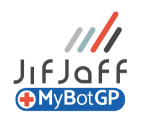With the push to increase automation and innovation in healthcare across the UK, more and more Primary Care providers are looking to Robotic Process Automation to solve for a lack of resources and time.
We’ve been working with NHS offices and Primary Care Networks in the NHS, and we’ve identified the following key areas that are major resource drains for healthcare providers and admin staff. By using robots to automate these tasks, we’ve already been able to assist our clients to free up major time and resources, reducing the burden on their staff.
Patient Registration
Registering patients involves filling in forms, capturing that data in your patient management system, and ensuring that all the information is as accurate as possible. It’s a time-consuming process, and when you consider the thousands of new patients registering for care across the nation every day, it quickly becomes apparent that patient registration is a huge use of time and resources. With automation, that entire process can be automated. Document processing, information capture, uploading files and updating a system can all be entirely managed by robots. This frees up hundreds of hours a year per practice, and thousands of hours a year for a PCN.
Data Management
Because robots can process documents, and manage and update data, data management is a huge focus for automation. Good healthcare is dependent on good data – patient records, care notes, treatments, and medications – all of this data needs to be properly processed and captured to ensure that our patients receive the greatest care. Robots can automate large amounts of data management – checking and entry, capturing information, updating systems and linking to reports – freeing up healthcare workers to be able to provide better care to their patients.
Call and Recall
The call and recall process requires outreach based on patient demographics and records. Sometimes, these require multiple attempts to ensure that appointments are scheduled so that healthcare can be provided. It is a long process that requires tracking patient records, reaching out, and ensuring appointments are booked in. Robots can take care of these – tracking the data, managing appointment booking, and future follow-up.
Operational Reporting
With robotics, it is far easier to manage operational reporting. Because data can be captured accurately and quickly by robots, reports are kept up to date, and generating these reports can be left to a robot. Reports are quick, accurate, and can be used to make informed decisions about resource allocation and priorities.
Getting started with automation
If you would like to understand more about how you can get started with automation, contact Jamesa@jifjaff.co.uk, and be sure to join our LinkedIn group and follow our page.
